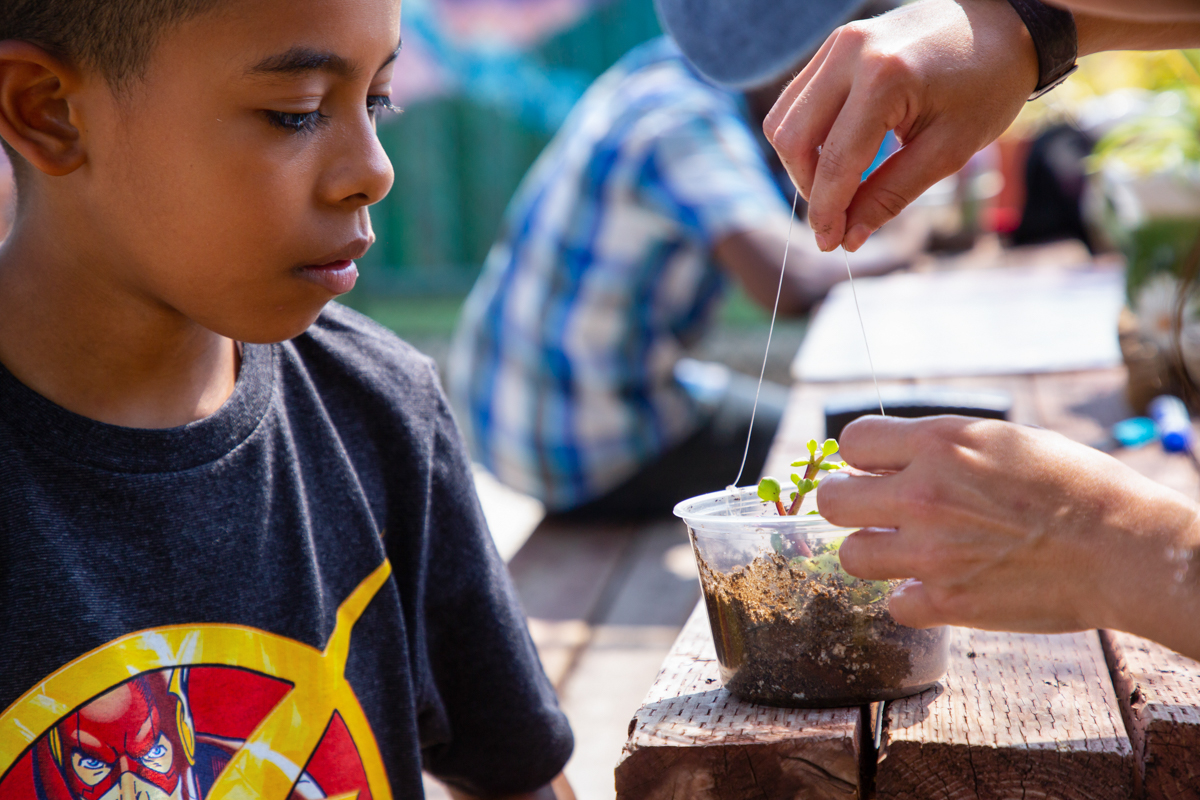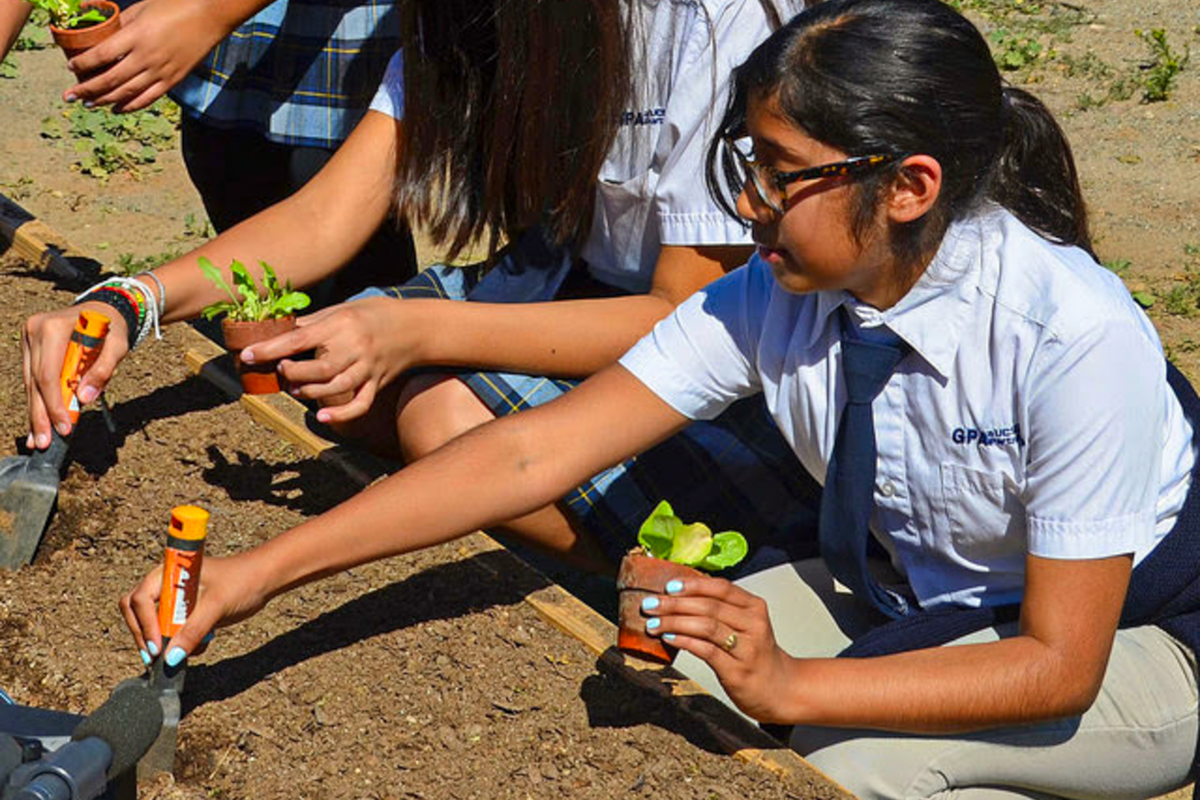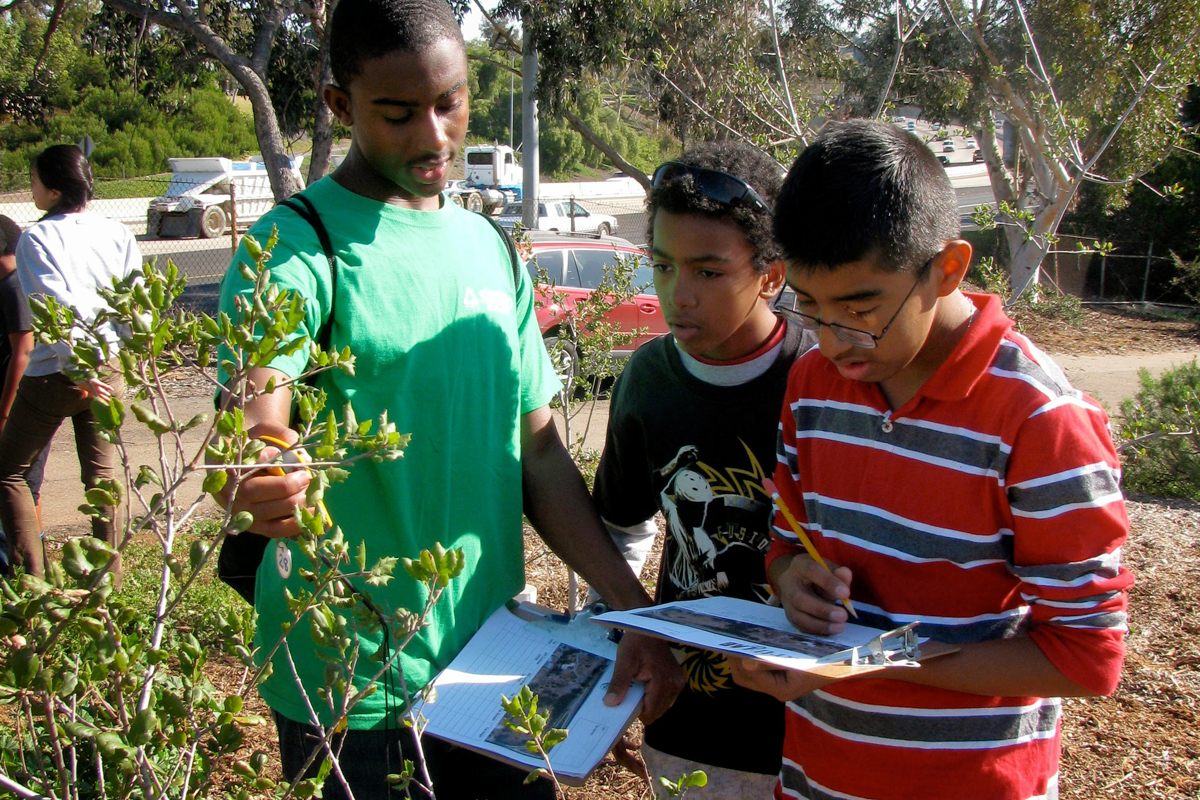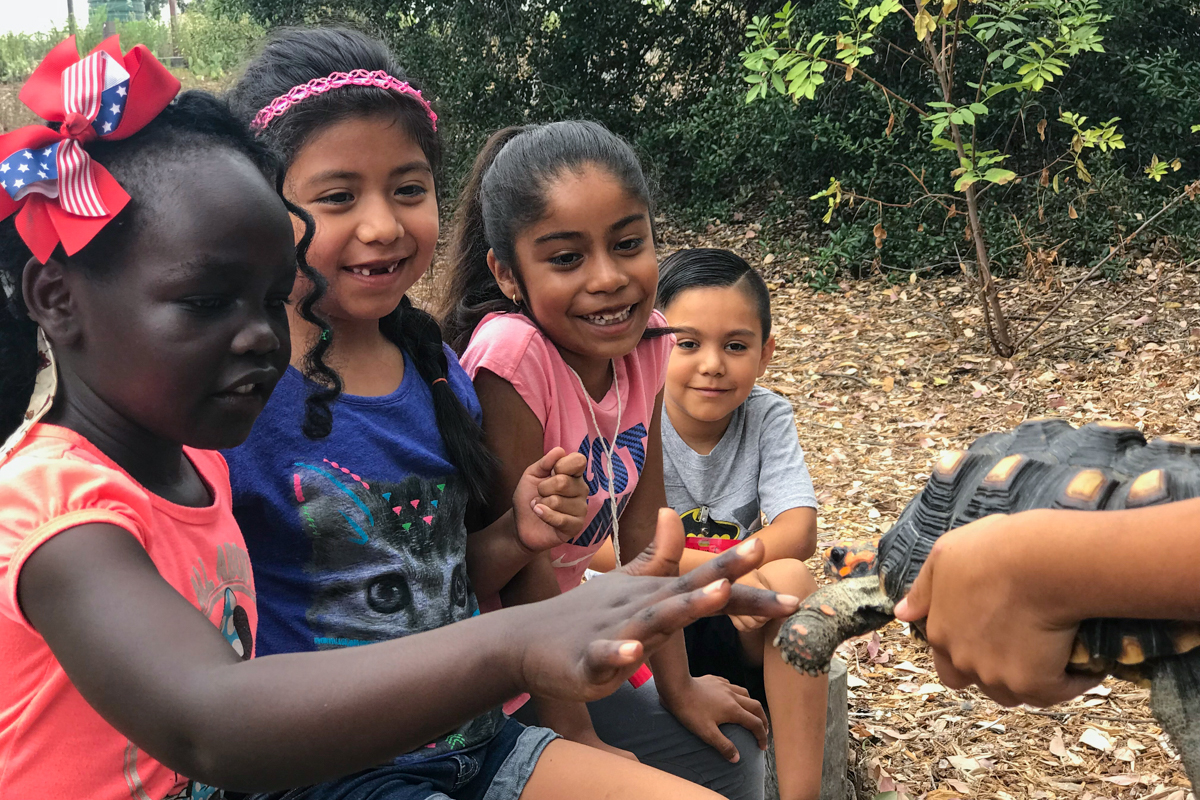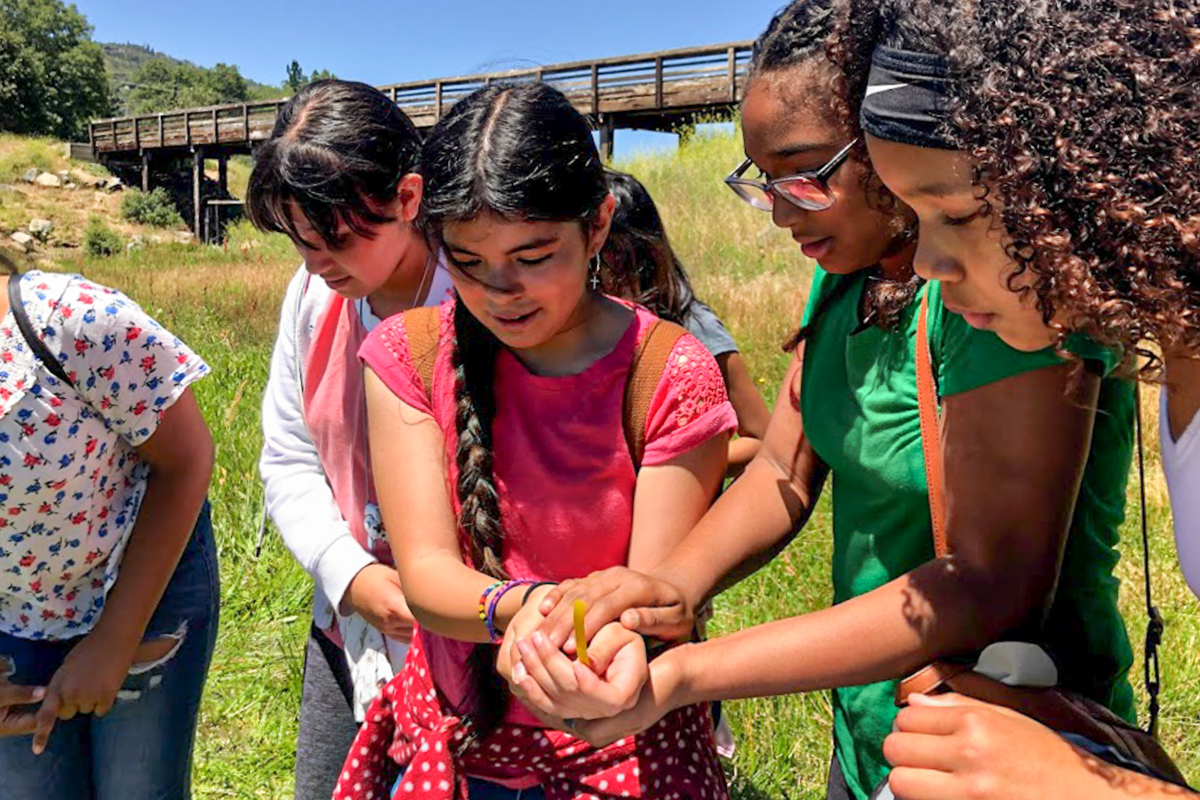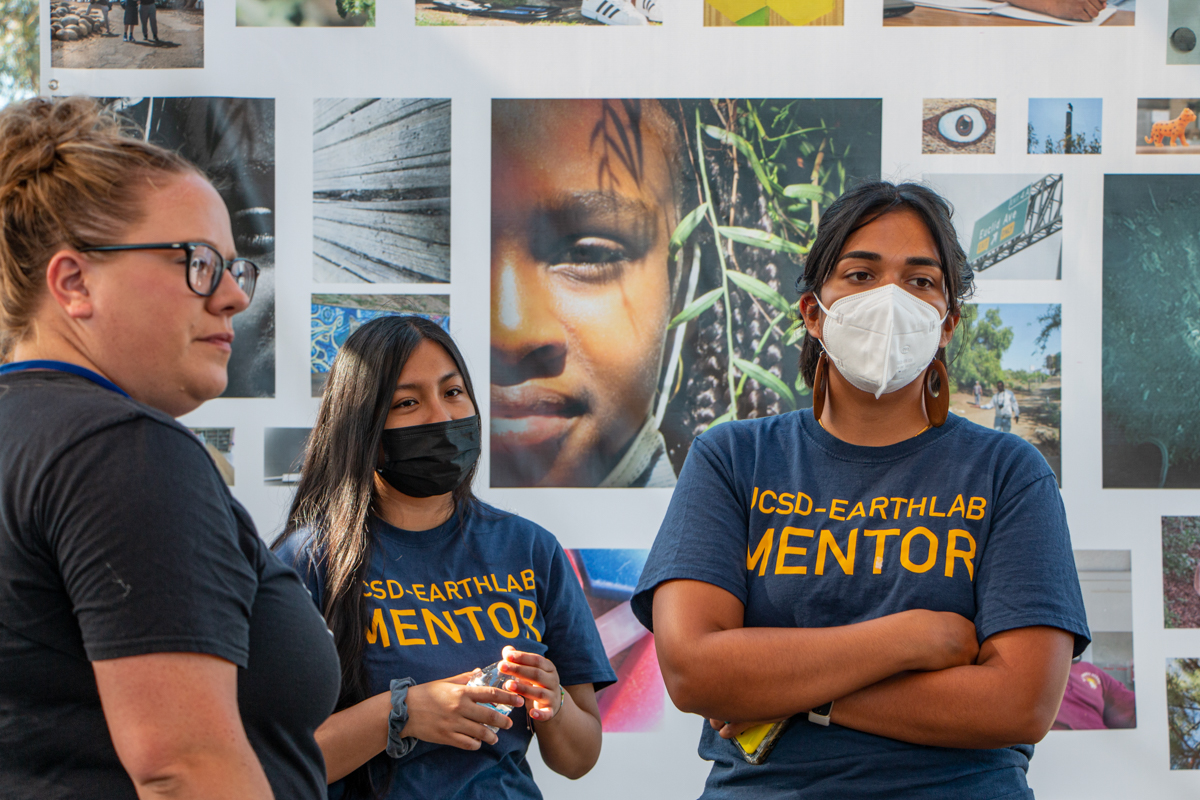An Experiential Model of Environmental Education
The EarthLab Method advances a new model of experiential environmental education for the youth of the Chollas Creek Watershed, and the larger San Diego community. Each year thousands youth and their families circulate through EarthLab, engaging in informal STEAM-based environmental education and climate action at neighborhood scale.
The EarthLab Method operates as a portfolio of lessons and activities designed to improve the scientific, ecological and cultural literacy of students. Learning like scientists, they reason using evidence; learning like ecologists, they experience the knowledge of nature and cultivate a desire to conserve valuable resources; and learning like artists, they are inspired to translate cultural indigenous traditions into practical tools for today’s environmental challenges. By linking technology and science (reason), ecology and conservation (empathy) and culture and arts (expression), the EarthLab Method aspires to integrate siloed forms of learning, and promote circulation between the formal classroom and the environmental design labs and outdoor activities that comprise Community Station programming.
Enhancing Classroom Learning
Research shows that underserved urban youth have less exposure to green spaces, and thus do not have essential opportunities to develop environmental empathy in the first ten years of life. These communities are also disproportionately impacted by climate change, and have the fewest resources to adapt. Environmental justice demands that we invest urgent resources and enhanced educational opportunities in these communities.
The research is clear: Getting kids into green spaces with hands-on field learning, produces better educational outcomes. This finding is particularly relevant in disadvantaged urban communities, where elementary and middle school students typically have less access to green space than their wealthier counterparts, and also experience the greatest STEM deficits in early education. Because these deficits are difficult to rectify after they happen, Groundwork San Diego is committed to delivering enhanced environmental education to urban youth at the EarthLab.
EarthLab gets young people beyond the four walls of the school and into green spaces, into the neighborhood, with hands-on, practical, inquiry-based exercises to supplement the California state standards-based curriculum they are learning in the classroom. By providing students with opportunities to participate in authentic science experiences, the EarthLab enhances their potential to meet and exceed state standards and supports the development of a more scientifically literate society.
Integrating Indigenous Knowledge
A central premise in our experiential education model is that science is embedded in the everyday life of communities. The EarthLab Model integrates a holistic approach to education, which includes both indigenous and scientific knowledge to understand and address urgent challenges like climate change. Cultural practices are integrated into our curriculum by translating traditional knowledges of indigenous communities into new models of experiential education, environmental practice, science and technology.
For example, the Chollas Watershed is a Kumeyaay sacred environment. The EarthLab exhibits integrate the Kumeyaay worldview and knowledges, as well as the traditional knowledges of indigenous peoples across the globe, to enrich our understanding of the impacts of climate change, as well as solutions to it. Climate action is a ripe opportunity for decolonizing knowledge, introducing children to different ways of viewing the world, and addressing its most urgent challenges.
Moving From STEM to STEAM
We believe that children at all grade-levels learn better when conventional STEM fields are combined with skills of visual literacy and aesthetic appreciation. For us, linking arts and humanities to science and math is an essential component of bridging the achievement gap in underserved urban neighborhoods. Through artistic drawing and the recording of empirical observations in “science notebooks”, students at the EarthLab cultivate both visual and scientific competency.
